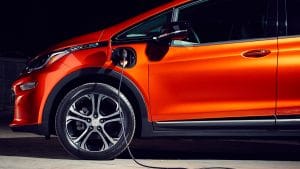Indian Prime Minister Narendra Modi’s government announced in 2016 an ambitious plan to have all of the country’s automobiles be electric by 2030. This goal now appears headed toward a more realistic target of 30%. However, doubts remain that even this can happen, as the program still has no clear-cut policy framework.

“We must ensure that by 2030, 30% of our vehicles run on electricity, to leave behind a better world for our grandchildren,” said Power Minister R.K. Singh.
Singh’s remarks came on March 7, at the launch of the national e-mobility program, to be implemented by state-run company Energy Efficiency Services Ltd.
This comes less than a month after Nitin Gadkari, minister for road transport and highways, said there was no need for an EV policy. The remarks were seen at the time as a reversal of the government’s plans to produce a comprehensive electric vehicle policy.
Singh’s reference to the 30% EV goal, and not the 100% outlined by the government earlier, is a “considerable dilution,” Deepesh Rathore, London-based director of auto consultancy Emerging Markets Automotive Advisors, told the Nikkei Asian Review.
Rathore said that achieving 30% EV coverage is going to be even more difficult than the 100% target. “You are not actually telling people to buy EVs — you are saying that you may also buy EVs. Why would someone take that option when that technology is not completely proved, [as against] the technology which is 100 years old and running very well across the world?”
He said the Indian government was not ready to introduce a comprehensive EV policy. “They are not ready today. I don’t think they would be ready in six months.”




























